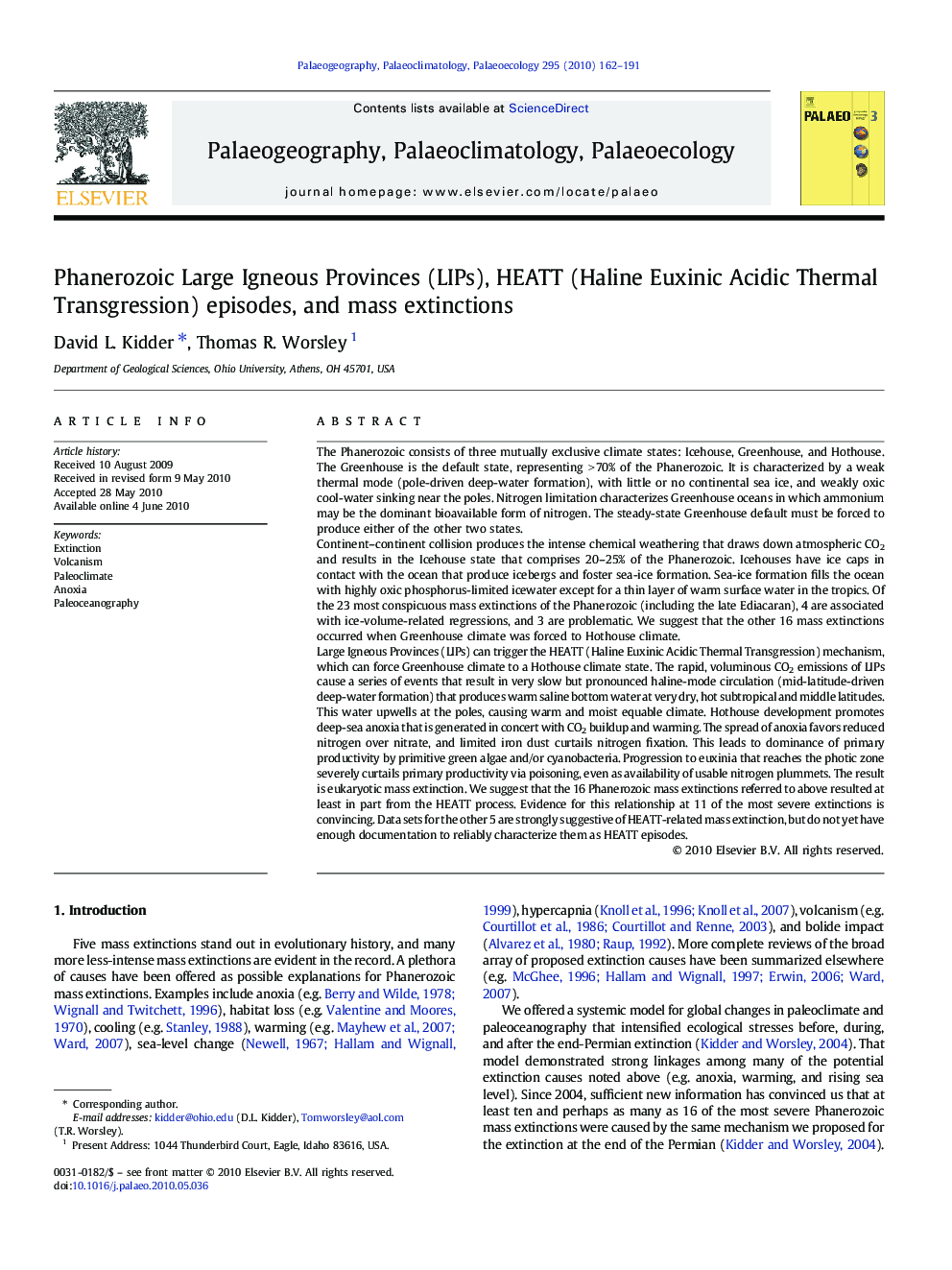| کد مقاله | کد نشریه | سال انتشار | مقاله انگلیسی | نسخه تمام متن |
|---|---|---|---|---|
| 4467634 | 1622272 | 2010 | 30 صفحه PDF | دانلود رایگان |

The Phanerozoic consists of three mutually exclusive climate states: Icehouse, Greenhouse, and Hothouse. The Greenhouse is the default state, representing > 70% of the Phanerozoic. It is characterized by a weak thermal mode (pole-driven deep-water formation), with little or no continental sea ice, and weakly oxic cool-water sinking near the poles. Nitrogen limitation characterizes Greenhouse oceans in which ammonium may be the dominant bioavailable form of nitrogen. The steady-state Greenhouse default must be forced to produce either of the other two states.Continent–continent collision produces the intense chemical weathering that draws down atmospheric CO2 and results in the Icehouse state that comprises 20–25% of the Phanerozoic. Icehouses have ice caps in contact with the ocean that produce icebergs and foster sea-ice formation. Sea-ice formation fills the ocean with highly oxic phosphorus-limited icewater except for a thin layer of warm surface water in the tropics. Of the 23 most conspicuous mass extinctions of the Phanerozoic (including the late Ediacaran), 4 are associated with ice-volume-related regressions, and 3 are problematic. We suggest that the other 16 mass extinctions occurred when Greenhouse climate was forced to Hothouse climate.Large Igneous Provinces (LIPs) can trigger the HEATT (Haline Euxinic Acidic Thermal Transgression) mechanism, which can force Greenhouse climate to a Hothouse climate state. The rapid, voluminous CO2 emissions of LIPs cause a series of events that result in very slow but pronounced haline-mode circulation (mid-latitude-driven deep-water formation) that produces warm saline bottom water at very dry, hot subtropical and middle latitudes. This water upwells at the poles, causing warm and moist equable climate. Hothouse development promotes deep-sea anoxia that is generated in concert with CO2 buildup and warming. The spread of anoxia favors reduced nitrogen over nitrate, and limited iron dust curtails nitrogen fixation. This leads to dominance of primary productivity by primitive green algae and/or cyanobacteria. Progression to euxinia that reaches the photic zone severely curtails primary productivity via poisoning, even as availability of usable nitrogen plummets. The result is eukaryotic mass extinction. We suggest that the 16 Phanerozoic mass extinctions referred to above resulted at least in part from the HEATT process. Evidence for this relationship at 11 of the most severe extinctions is convincing. Data sets for the other 5 are strongly suggestive of HEATT-related mass extinction, but do not yet have enough documentation to reliably characterize them as HEATT episodes.
Journal: Palaeogeography, Palaeoclimatology, Palaeoecology - Volume 295, Issues 1–2, 1 September 2010, Pages 162–191